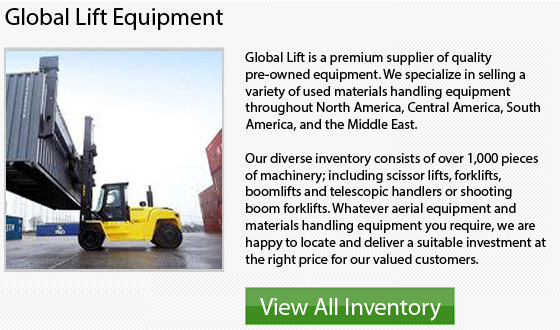
To make certain that the driver of the forklift remains safe and to avoid lift truck misuse wherever possible, the counterbalance forklift operator is encouraged to take these following measures to keep the machine running optimally.
Tires: Tires should be replaced when they are worn badly or are missing chunks. If the tire is in rough shape, they could cause sharp jarring impacts to the operator, the axle parts, to the wheel parts, and to the load itself. Challenging operations involve using correct types of tires for utmost performance of the forklift truck. So as to be certain that your equipment has the proper kind of tires, ask your local dealer for an application survey.
Forks: Operating a forklift with worn tires could add to the premature wearing of the bottom of the forks. This can greatly jeopardize the ability of the forklift's truck to lift, which creates a potentially dangerous work setting. Being sure to complete routine fork checks by in-house maintenance technicians and by operators has to happen on a regular basis in order to make certain that your machine is working at maximum capacity.
Transmission: Drivers who ride on the inching pedal can cause damage to the transmission. In order to avoid major component breakdown and failure, the inching pedal must ideally only be engaged when you want to apply the brakes while revving the engine and when you are approaching a rack. When the engine is revving, the hydraulics can work at full speed. When the hydraulics are not being used, the brake pedal is used for regular stopping of the truck.
Impact: Whenever the unfortunate circumstance of a lift truck encountering an impact to surroundings and products at high travel speeds occurs, wheels, forks, tires, backrests and attachments all suffer. Following which operators drive which models by assigning machinery to a driver can help track who is responsible for the abuse to the machine. By installing an impact monitor, a keyless access system or a vehicle speed limiter as options on your forklift truck can really help you to greatly lessen impact damage.
Training: Regular training and ongoing training is important to make sure that your machine is well maintained. Users of the equipment need to be on board with proper maintenance and safety applications. It is required that all new operators are correctly trained and know how to perform the required inspections every day so they can properly operate the machine before using it.